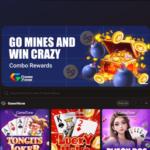Most web designers don’t feel that SEO (Search Engine Optimization) is important for their projects or client websites. A recent poll of over 19,000 designers shows that 7% of designers don’t feel that SEO is important and 9% of designers don’t even know what SEO stands for, let alone what it is. If you are a designer and are amongst the group that doesn’t know what SEO is or how it can benefit you, you should pay close attention to this article. This guide is for designers who want to learn about SEO so that search engines can find your or your clients website or blog. I will cover some of the common mistakes that web designers and developers make when it comes to SEO and then I will walk you through some basic tips and how to’s that you can add to your basic to do list on your next project.

SEO is not Web Design,is it?
There is a common misconception that SEO is only for marketers but as a web designer and developer many of the on page and on-site SEO elements should be high on your list.
If your website is not search engine friendly chances are that you are not yielding as much traffic as possible to your site and let’s face it, search engines are the best way for people to find your website.
Search Engine Optimization as part of a value added service for your clients websites can be financially beneficial as a web designer
If your website is not search engine friendly chances are that you are not yielding as much traffic as possible to your site and let’s face it, search engines are the best way for people to find your website.
Search Engine Optimization as part of a value added service for your clients websites can be financially beneficial as a web designer
Search Engines, Spiders and Penguins Oh My!
So, let’s take a look at how search engines work. The biggest player in all this is of course Google. A search engine relies on automated technology known as a “spider” or “crawler” and it
essentially does as its name suggests it crawls the entire web. A “spiders” primary objective is to crawl websites and its pages, gather data (content) and follow all links both internal and external. Once all the data is gathered the spider then indexes all the information into the search engine’s database.
essentially does as its name suggests it crawls the entire web. A “spiders” primary objective is to crawl websites and its pages, gather data (content) and follow all links both internal and external. Once all the data is gathered the spider then indexes all the information into the search engine’s database.
When someone wants to find a specific website or term they enter a query into a search engine’s search box. Once entered the search engine then gathers all the information inside it’s index to display the most relevant results to the search query. (Very complicated algorithm under the search engines hood)
It’s no secret that the best search engine is the one that best answers a search query. A recent change to Google’s algorithm code named Penguin affected the way results are displayed for about 3% of indexed sites. Now that may seem like a small percentage but when you think about the number of websites indexed by Google the number is quite big and your site or your clients website could be in that 3%.
What Can You Do As a Designer?
Understanding a search engine’s algorithm can be quite cumbersome but there are two simple elements that will help you get a clear grasp of how a search engine works and what you can do to influence your websites visibility.
On-Site SEO
Elements such as keywords, content, internal links, proper alt and title tags on images, HTML markup and site structure are part of on-site SEO elements that you can do on your website.
Off-Site SEO
Elements that fall into this category are related to backlinks (number of sites linking to your website), guest articles and social media.
In this article we will cover the aspects that web developers and web designers can control and adjust for optimum search engine visibility.
Some Common Mistakes Made by Web Designers and Developers

– The Landing Page or Splash Page
Your website’s homepage is part of the initial impact that you make on your site’s visitors but don’t forget that in the order of things it is the first thing that a search engine spider crawls. A homepage with little or no content is not the best option to get your website ranked. It is important that your homepage contains content and keywords that appeal to your target audience.
Your website’s homepage is part of the initial impact that you make on your site’s visitors but don’t forget that in the order of things it is the first thing that a search engine spider crawls. A homepage with little or no content is not the best option to get your website ranked. It is important that your homepage contains content and keywords that appeal to your target audience.
– Who Needs Content
With all the changes happening inside Google’s search algorithm, content has become an integral part of web design. Now I am not suggesting that you become a copywriter on top of being a designer but you need to think about what kind of content you want on your website or a clients’ website so that it can be indexed correctly and ultimately found.
With all the changes happening inside Google’s search algorithm, content has become an integral part of web design. Now I am not suggesting that you become a copywriter on top of being a designer but you need to think about what kind of content you want on your website or a clients’ website so that it can be indexed correctly and ultimately found.
– Basic HTML Markup
The use of some basic HTML markup is also important when it comes to SEO. Common attributes as for your pages title and are part of what a search engine displays in a search query/ Other HTML elements like ALT and Title tags on your websites images can also help when someone is searching for specific images related to your website.
The use of some basic HTML markup is also important when it comes to SEO. Common attributes as for your pages title and are part of what a search engine displays in a search query/ Other HTML elements like ALT and Title tags on your websites images can also help when someone is searching for specific images related to your website.
Good SEO
Appeal to Your Audience
Always appeal to your target audience. Make sure that the content that you are writing on your website is both engaging and informative so that your audience keeps coming back to your site and so that search engines correlate the synergy between search queries and your sites content.
Keyword Density
Think about the keywords that you want your website to show up for and make sure that you include them on your page titles, descriptions headers and content. Keep it simple and natural there is no need to overdo it and using synonyms is a great way to broaden your target keywords.
Always appeal to your target audience. Make sure that the content that you are writing on your website is both engaging and informative so that your audience keeps coming back to your site and so that search engines correlate the synergy between search queries and your sites content.
Keyword Density
Think about the keywords that you want your website to show up for and make sure that you include them on your page titles, descriptions headers and content. Keep it simple and natural there is no need to overdo it and using synonyms is a great way to broaden your target keywords.

Keep It Together, Internal Linking is Good
A sure fire way to make sure that a search engine can relate content across your website is the use of internal links. These links are basically aiding a spider in its job letting it know what links are related to what content. Also make sure you don’t overuse anchor tags and it’s ok to use click here or follow this link every once in a while because there will be times when it’s just natural to use these terms.
A sure fire way to make sure that a search engine can relate content across your website is the use of internal links. These links are basically aiding a spider in its job letting it know what links are related to what content. Also make sure you don’t overuse anchor tags and it’s ok to use click here or follow this link every once in a while because there will be times when it’s just natural to use these terms.
SERP’S
Page Rank
Don’t obsess over PR. While pagerank is cool for authority and an awesome looking badge and it’s how Google sees your website and its authority. If you follow the rules stated above PR will follow.
Domain Age
Having an established domain is also a factor that a search engine considers within it’s algorithm. Older domains have indexing history, and the content in the site is looked at as more credible than the website that got started last week.
Patience is a Virtue
Being patient is key when it comes to search engine optimization and it takes time for a search engine to index all the changes and updates that you make to your site. So don’t feel bad if your website does not show up right away in search results and also consider the competitiveness of your target keywords.
Don’t obsess over PR. While pagerank is cool for authority and an awesome looking badge and it’s how Google sees your website and its authority. If you follow the rules stated above PR will follow.
Domain Age
Having an established domain is also a factor that a search engine considers within it’s algorithm. Older domains have indexing history, and the content in the site is looked at as more credible than the website that got started last week.
Patience is a Virtue
Being patient is key when it comes to search engine optimization and it takes time for a search engine to index all the changes and updates that you make to your site. So don’t feel bad if your website does not show up right away in search results and also consider the competitiveness of your target keywords.
Resources and Tools
There a a number of free resources and tools on the web that will help you get an edge when it comes to search engine optimization. You may need to sign up for some of these tools but it is completely worth it to take a few minutes to complete the signup forms.
Google Webmaster Tools
View detailed reports of your website’s visibility on Google in a an easy to use interface. With webmaster tools you can keep track of:
– When your site was crawled
– 404 errors
– HTML suggestions
– Search queries and more!
View detailed reports of your website’s visibility on Google in a an easy to use interface. With webmaster tools you can keep track of:
– When your site was crawled
– 404 errors
– HTML suggestions
– Search queries and more!
Google Analytics

Tracking visitor information is essential and can help you in identifying what’s working and what needs to be optimized on your website. In analytics you can:
– View traffic sources
– Identify top landing pages
– View keywords that generated traffic to your website and more!

Tracking visitor information is essential and can help you in identifying what’s working and what needs to be optimized on your website. In analytics you can:
– View traffic sources
– Identify top landing pages
– View keywords that generated traffic to your website and more!
Chrome SEO Site Tools
A chrome extension that gives you a quick view of the following:
– Alexa Data
– Page Rank
– On page elements
– On page SEO suggestions
A chrome extension that gives you a quick view of the following:
– Alexa Data
– Page Rank
– On page elements
– On page SEO suggestions

SEO Book Toolbar
The SEO Book toolbar is a complete tool for Firefox that comes with:
– Page Rank
– SEO X Ray tool
– Keyword ranking tool and more!
The SEO Book toolbar is a complete tool for Firefox that comes with:
– Page Rank
– SEO X Ray tool
– Keyword ranking tool and more!
In Other Words
Remember the basics of HTML, appeal to your target audience, define target keywords and use some very simple tools and you will be on your way to get your site indexed in search engines so that your target audience can find it in search results.
SEO for Web Designers?






